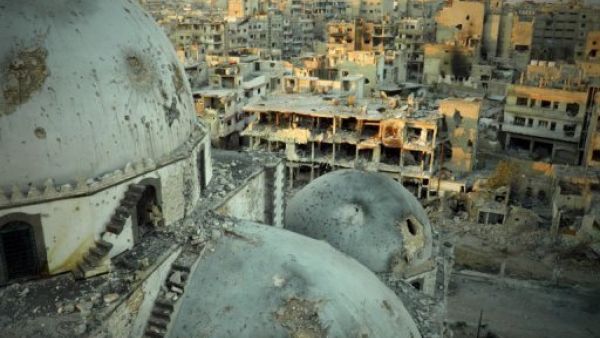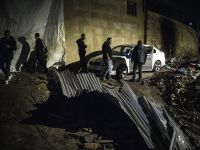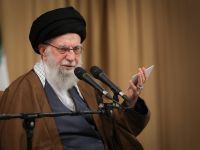Syrian government forces backed by Hezbollah were poised to take full control of the key rebel district of Khaldieh as part of a major push to take the central city of Homs, in what activists Sunday admitted would deal them a major blow.
President Bashar Assad’s forces are trying to crush resistance in the few remaining opposition-held neighborhoods in the city known as the “capital of the revolution,” and are making headway in areas held by the rebels for more than a year.
Homs holds immense strategic and symbolic importance for both sides, and the ferocity of the fighting for control of it has left much of the city in ruins.
In a highly significant development, government troops captured the landmark 13th century Khaled bin Walid Mosque in Khaldieh Saturday. Syrian television aired a report with video footage from inside the mosque showing heavy damage. The video showed debris littering the floor and a portion of the mosque appeared to have been burned.
Government troops shelled the mosque last Monday, damaging the tomb of Khaled bin Walid, one of the Prophet Mohammad’s companions and a revered figure in Islam. The video showed the tomb’s roof knocked down.
Famous for its nine domes and two minarets, rebels had vowed to defend the mosque at all costs.
Broadcasting the operation in Khaldieh live on state television, Syrian government footage showed gaping holes in apartment blocks and shattered buildings with collapsed floors and blackened facades.
The military took TV crews working for pro-regime media outlets deep into the neighborhood, with soldiers and reporters walking through rubble-strewn streets, an indication the army was confident it had secured the area.
An unidentified Syrian army commander standing before a destroyed building in the district told an embedded state TV reporter that the military expected to “liberate” the last part of Khaldieh within the next two days.
The opposition accused the regime of pulverizing the district and said their victory was “hollow.”
One opposition activist, speaking via Skype from nearby Khaldieh, admitted the loss was a setback but said fighters would not give up.
“We have lost about 70 percent of Khaldieh and fighters are still inside besieged Homs ... Khaldieh isn’t Homs. I mean, Homs consists of many districts ... but yes, we lost it,” he told The Daily Star.
“That was awful for us, but we’ll stay here, and inshallah, fight to retake it. Maybe we lose a battle, but the war isn’t over yet.”
He said some 40 or 50 people had been killed in about three weeks of fighting but would not be drawn on how many of those were rebel fighters.
There was no word on whether the Syrian Arab Red Crescent had many headway in negotiations over a deal to evacuate civilians and families of fighters in besieged areas there. Opposition groups have called on the U.N. and the International Red Cross to create a safe passage for 2,000 civilians they say are trapped in the area.Syria’s main exiled opposition group, the Syrian National Coalition, acknowledged that rebels had retreated from parts of Khaldieh, calling it a “tactical withdrawal.”
“After the heavy bombardment of the Khaldieh area of Homs, using thousands of rockets, explosive barrels and large amounts of heavy weaponry ... Assad’s forces have managed to overtake a few yards of the land that they have pulverized,” it said in a statement.
The push on Homs is part of a broader government offensive to retake territory lost to opposition fighters in Syria’s more than 2-year-old conflict. Assad’s forces set their sights on Homs, the country’s third-largest city, after recapturing the strategic town of Qusair near the Lebanese border last month.
In addition to its symbolic value, Homs is a geographic linchpin in Syria. The main highway from Damascus to the north and on to the coast, the heartland for Assad’s Alawite sect, runs through the region.
Some opposition groups accuse Assad of trying to establish a separate Alawite state within Syria, leveling allegations of systematic ethnic cleansing of Sunnis in the area to support their claim.
Free Syrian Army commander Omar al-Homsi, who claims to be leading an opposition brigade in the outskirts of Damascus, said the takeover of Homs would precipitate the fracturing of the country.
“Losing Homs means dividing Syria into two parts” he told The Daily Star. “[After Homs] the regime will later move to Rif [rural] Damascus to get a hold on the whole area by trying to cut all opposition roads from Homs to the south.”
“This is the beginning of the even bigger war.”
Meanwhile an official in the Homs governor’s office said a car bomb exploded near a checkpoint on the Homs-Tartous highway Sunday, killing three people and wounding five others. He spoke on condition of anonymity because he was not authorized to give official statements.








